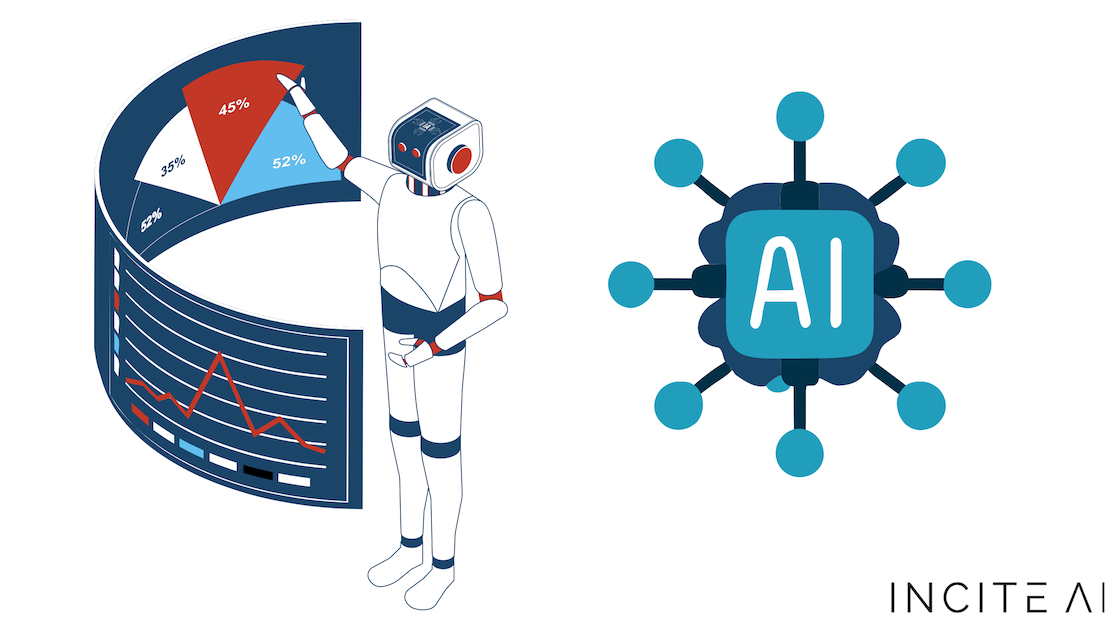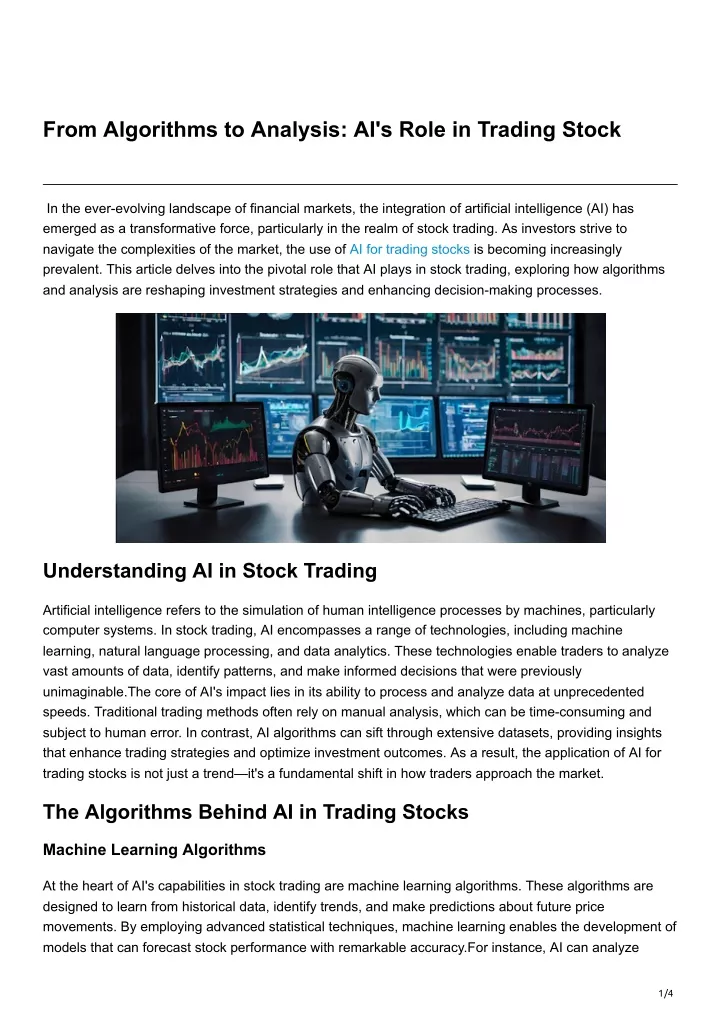The ability to customize strategies is an essential characteristic of AI stock Predicting/Analyzing trading platforms that allow users to customize the platform according to their specific trading goals and risk tolerance as well as market conditions. A platform that offers a wide range of customization options can boost the performance of your trading. Here are 10 suggestions on how to assess the flexibility of these platforms.
1. Evaluate Pre-Built Strategy Templates
A variety of templates. Make sure the platform offers a broad variety of pre-built strategies for various types of trading (e.g. day trading, swing trading or long-term investment).
You can easily modify the templates to adapt them to meet your particular requirements.
Performance history: Check if the platform offers historical performance data on strategies that have been pre-built.
2. Review the effectiveness of Custom Strategy Creation
Drag-and drop tools Search for platforms that offer intuitive drag-anddrop interfaces to create customized strategies.
Check the platform's coding options. Advanced users may want to use custom scripting languages (e.g. Python or R).
Flexibility: Ensure that the platform lets you define entry/exit rules as well as risk management parameters and other key components of your plan.
3. Check for Backtesting Capabilities
Historical data. Examine whether the platform can provide sufficient historical data to test the strategy.
Customizable parameters: Ensure you are able to adjust parameters (e.g., timeframes, indicators) when backtesting.
Performance metrics: Determine whether the platform has precise performance metrics like win rates (e.g. Sharpe ratio) drawdown, win rate, and other indicators for strategies that have been tested back.
4. Evaluate Real-Time Strategy Testing
Paper trading Strategies can be tested in real time using paper trading or simulation.
Live testing - Check that you can test strategies using small amounts to see how they perform.
Real-time adjustment: Find out whether it is possible to adjust strategies according to market conditions.
5. Examine the integration using technical indicators
Indicator Library: Check if the platform has a library of technical indicator (e.g. moving averages, RSI or MACD).
Custom indicators you should be able to create or import your own indicators that you can use for your plans.
Check the combination of indicators.
6. Check for Risk Management Tools
Stop-loss/take-profit: Ensure the platform allows you to set stop-loss and take-profit levels within your strategies.
Size of the position: See if you can define guidelines for the size of your portfolio (e.g. Fixed amount, percentage of your portfolio) to control the risk.
Risk-reward-ratio: Check the platform's capabilities to set risk/reward ratios for individual trades or strategies for trading.
7. Evaluate Multi-Asset Strategy Support
Asset classes: Check that your platform is able to support various asset classes such as stocks, ETFs and options.
Strategies for cross-assets: Determine if you're able to design strategies that incorporate multiple asset classes.
Market coverage: Check if the platform is able to cover those markets that you're interested in (e.g., US, international, cryptocurrencies).
8. Review Automation & Execution
Automated trading: Ensure that the platform can automate execution of strategies that follow predetermined rules.
Types of orders: Make sure that the platform can execute various types of orders like market, limit and stop.
Latency - Check the platform's ability to execute trades promptly, especially when using high-frequency strategies.
9. Make sure you are using tools to optimize your strategy.
Parameter Optimization: Check that the platform has tools for optimizing strategies parameters (e.g. genetic algorithms grid search, genetic algorithms).
Integration of machine learning: Verify whether the platform is using machine learning to refine and optimization of strategies.
Scenario analysis: Check if the platform permits you to test various strategies under different market conditions (e.g. bear or bull, volatile).
Review Community Feedback and User Feedback
User feedback: Use reviews from users to assess the efficacy of the platform in determining customizing strategies.
Community forums: Check whether you can find forums where members discuss and exchange ideas for custom strategies.
Support resources. Be sure to check for tutorials or webinars available to help you create and optimize your strategies.
Bonus Tips
Trial period: Try the customization options of the platform at no cost by registering for a trial or demo.
Scalability - Make sure that the platform you choose can adapt to your changing trading strategies.
Customer support: Find out if support available for questions or concerns related to the strategy.
If you follow these guidelines, you will be able to evaluate the potential of AI stock-Predicting/Analyzing trading platform to tailor strategies. This will enable you to select a trading platform that matches your objectives in trading and lets you apply and improve strategies. A platform that has an array of customizable options will allow you to better adapt to market changes and boost your trading performance. See the top rated incite for website examples including AI stock trading app, investing ai, AI stock picker, ai investment app, ai for stock trading, investment ai, AI stock trading app, ai for investing, AI stock trading app, ai investment app and more.

Top 10 Tips For Evaluating The Educational Resources Of AI stock Forecasting And Analyzing Trading Platforms
To know how to use, interpret, and make informed decisions about trading Users must evaluate the educational tools offered by AI-driven prediction as well as trading platforms. Here are ten tips on how to assess the quality and utility of these instruments:
1. The most comprehensive tutorials and guides
TIP: Ensure that the platform offers tutorials and user guides that are targeted at beginners and advanced users.
The reason: Clear directions allow users to understand and navigate the platform.
2. Webinars, Video Demos, and Webinars
Find videos online, webinars and live training sessions.
Why Visual and Interactive content can aid in understanding complex concepts.
3. Glossary
Tip. Check that your platform comes with a glossary that clarifies key AIand financial terms.
Why: This helps users, particularly beginners learn about the terms employed in the platform.
4. Case Studies & Real-World Examples
Tip: Check if there are case studies and examples of AI models being used in real-world situations.
Experiments can be used to illustrate the efficiency of the platform, and enable users to interact to its applications.
5. Interactive Learning Tools
Tips - Search for interactive features like games and sandboxes.
Why are they useful? Interactive tools allow users to practice and test their skills without risking money.
6. Updated content
If you are unsure, check to see the educational materials are regularly updated to reflect new trends, features, or regulations.
What's the reason? Outdated information can result in misinterpretations and incorrect application of the platform.
7. Community Forums Help, Support and Assistance
Tips: Look for active support groups or community forums where members can share their knowledge and ask questions.
What's the reason? Expert and peer guidance can aid students in learning and resolve problems.
8. Programs for Accreditation or Certification
Find out whether there are any certification programs or training courses that are accredited that are offered on the platform.
The reasons: Recognition of formal learning can enhance credibility and encourage users to increase their knowledge.
9. Accessibility and user-friendliness
Tips: Evaluate how accessible and user-friendly educational resources are.
The reason: Accessibility allows users to study at their own pace.
10. Feedback Mechanism for Educational Content
Tips - Make sure you can provide feedback to the platform about the educational materials.
The reason is that feedback from users can help increase the value and quality of the resources.
Bonus tip: Use different learning formats
Be sure that the platform supports a range of formats for learning that will suit your different types of learning (e.g. text, audio videos, text).
If you take the time to carefully review these options, you will discover if you've got access to high-quality education resources that will help you make the most of their potential. Follow the top rated trading ai tool for site examples including how to use ai for stock trading, how to use ai for stock trading, AI stock prediction, stock predictor, stock predictor, free AI stock picker, best AI stocks, ai software stocks, AI stock trader, best stock prediction website and more.
